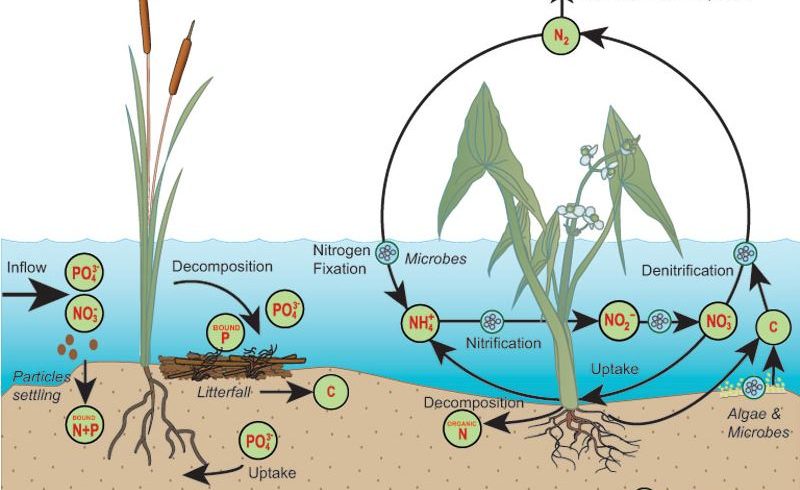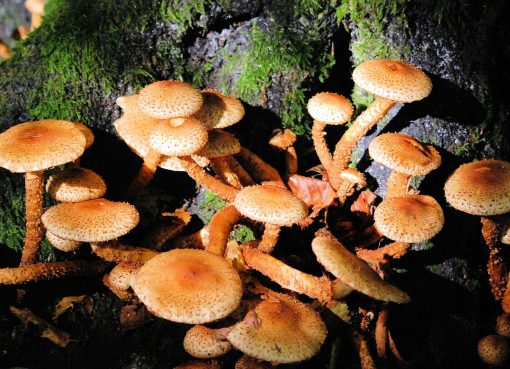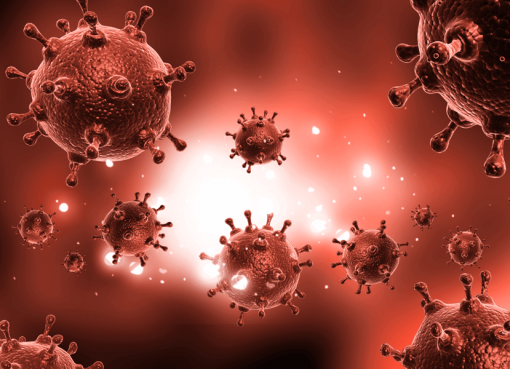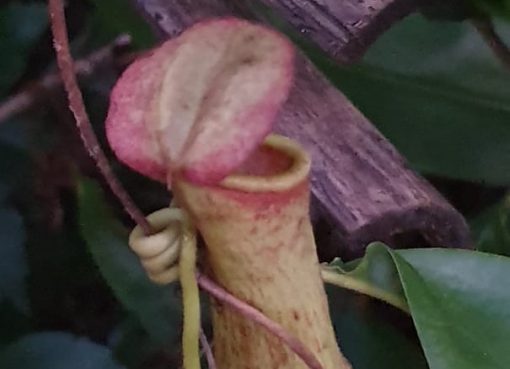Pubali Bhuyan
Research Scholar
Dept. of Life Sciences, Dibrugarh University
Besides several mineral nutrients required for plant growth, nitrogen is also required in the largest amounts and is most often limiting. Although some plant species are capable of fixing atmospheric nitrogen through symbiotic relationships with soil microbes, most plants rely on direct uptake of (primarily) inorganic forms of nitrogen from the soil. Inorganic nitrogen is commonly available in both an oxidized form (nitrate, NO3–) and a reduced form (ammonium, NH4+). Nitrate reductase is one of the most important enzymes involved in the assimilation of exogenous nitrate and it is the predominant form of nitrogen available to green plants growing in soil. Nitrite reductase refers to any of several classes of enzymes that catalyze the reduction of nitrite. There are two classes of nitrite reductases: a multi-haem enzyme reduces NO2 to a variety of products. Copper-containing enzymes carry out a single electron transfer to produce nitric oxide. Eukaryotic nitrate reductases are part of the sulfite oxidase family of molybdoenzymes. Prokaryotic nitrate reductases belong to the DMSO reductase family of molybdoenzymes and have been classified into three groups, assimilatory nitrate reductase (Nas), respiratory nitrate reductase (Nar), and periplasmic nitrate reductase (Nap). The active site of these enzymes is a molybdenum (Mo) ion that is bound to the four thiolate functions of two protein molecules. The coordination sphere of the Mo is completed by one amino-acid side chain and oxygen and/or sulphur ligands. The exact environment of the Mo ion in certain of these enzymes (oxygen versus sulphur as a sixth molybdenum ligand) is still debated. The Mo is covalently attached to the protein by a cysteine ligand in Nap, and an aspartate in Nar. Activity of this enzyme in plants gives a good estimate of the nitrogen status of the plant and is very often correlated with growth and yield. The uptake and metabolism of nitrogen affect the quality and quantity of crops, and recent studies on wheat plants have shown that there is a good correlation between leaf nitrate reductase activity and yield.
Tea is a beverage made from the leaves and buds of Camellia sinensis (L.) O. Kuntze and has been safely consumed for thousands of years. It is currently the second most widely consumed beverage in the world after water and is considered to be refreshing, have an attractive aroma and taste, and have potential health benefits. As a leaf crop, tea plants consume large amounts of nitrogen. For tea plants, nitrogen uptake accounts for 4.5% of the dry weight. Thus, nitrogen gives great contributions to the improvement of tea quality and yield. Recent studies showed that compared to the preferential nitrogen source NH4+, when NO3– was supplied as the sole nitrogen source, tea plants show similar symptoms with the nitrogen-free treatments and show lower nitrogen, free amino acid accumulation, chlorophyll content and biomass gain, indicating NO3– is not efficiently used by these plants. Tea plants are well adapted to NH4+ rich environments by exhibiting a high capacity for NH4+ assimilation in their roots, reflected in strongly increased key enzyme activities and improved carbohydrate status. The poor plant growth with NO3– was largely associated with inefficient absorption of this nitrogenous source. Decreased growth caused by inappropriate external pH corresponded well with the declining absorption of nitrogen.
For tea plants, amino acids are the most important chemical components that affect tea quality. There are two main kinds of amino acids in tea plants. Among them, one is the amino acid which composes of protein (relatively stable and rarely changes with the external environment) and the other is the free amino acid (FAA) (the main form of nitrogen storage in tea plants that always change with the environment). The free amino acids are particularly interesting because they are not only responsible for the savory taste of tea infusions, but also have various beneficial effects. In tea plants, 26 varieties of amino acids have been identified accounting for about 1- 4% of the dry weight. A large proportion of amino acids is synthesized in the roots of the tea plants and is then transported to leaves. In other words, tea roots contribute greatly to amino acid synthesis. Therefore, tea roots can rapidly perceive changes in the external nitrogen form, and the FAA characteristics of leaves would change rapidly. For instance, glutamic acid and aspartic acid have the umami taste and can improve the taste of tea infusion. In addition, there is a significant positive correlation between tea quality and theanine content. Theanine can reduce the bitter and astringent taste of tea infusions and improve the sweet and umami taste. Unlike other plants, tea plants can convert excess glutamic acid into theanine, which is an amino acid unique to tea plants. Theanine is a non-protein amino acid that occurs naturally in the tea plant, accounting for 1 – 2% of the dry weight of leaves and over 50% of the total free amino acids. Green tea quality is also greatly influenced by concentrations of free amino acids, polyphenols (mainly catechins) and caffeine. When ammonium is taken up directly from the soil, it is generally transported to the root cell plastids and immediately assimilated into the amino acid glutamate by the glutamine synthetase or glutamate synthase pathway. In contrast, the uptake of nitrate is followed by reduction to nitrite (NO2–) by the cytosolic enzyme nitrate reductase and subsequent reduction of nitrite to ammonium by the plastid enzyme nitrite reductase. The nitrogen source affects the growth of tea plants and regulates the accumulation of catechins in the leaves.
Conclusion:
The relationship between nitrogenous source and quality of tea reveals that there is a link with the improvement of fertilizer application technology in tea production. Therefore, preferences should be given on metabolism of nitrogenous compounds in tea leaves, nitrogen cycle in tea garden soils and application of bio-fertilizers.
References:
Ruan, L.; Wei, K.; Wang, L.; Cheng, H.; Wu, L. and Li, H. (2019). Characteristics of free amino acids (the quality chemical components of tea) under spatial heterogeneity of different nitrogen forms in tea (Camellia sinensis) Plants. Molecules. 24: 1-9.
Ruan, L.; Wei, K.; Wang, L.; Cheng, H.; Zhang, F.; Wu, L.; Bai, P. and Zhang, C. (2016). Characteristics of NH4 + and NO3 − fluxes in tea (Camellia sinensis) roots measured by scanning ion-selective electrode technique. Sci. Rep. 6: 38370.
Yang, Y.Y.; Wang, F.; Wan, Q. and Ruan J.Y. (2018). Transcriptome analysis using RNA-Seq revealed the effects of nitrogen form on major secondary metabolite biosynthesis in tea (Camellia sinensis) plants. Acta Physiol. Plant. 40: 127.
Fan, K.; Fan, D.; Ding, Z.; Su, Y.; Wang, X. (2015). Cs-miR156 is involved in the nitrogen form regulation of catechins accumulation in tea plant (Camellia sinensis L.). Plant Physiol. Biochem. 97: 350–360.
Zhao, M.; Ma, Y.; Dai, L.; Zhang, D.; Li, J.; Yuan, W.; Li, Y. and Zhou, H.A. (2015). High-performance liquid chromatographic method for simultaneous determination of 21 free amino acids in tea. Food Anal. Method. 6: 69–75.
Marzluf, G.A. (1981). Regulation of nitrogen metabolism and gene expression in fungi. Microbiological Reviews. 45 (3): 437–461.




